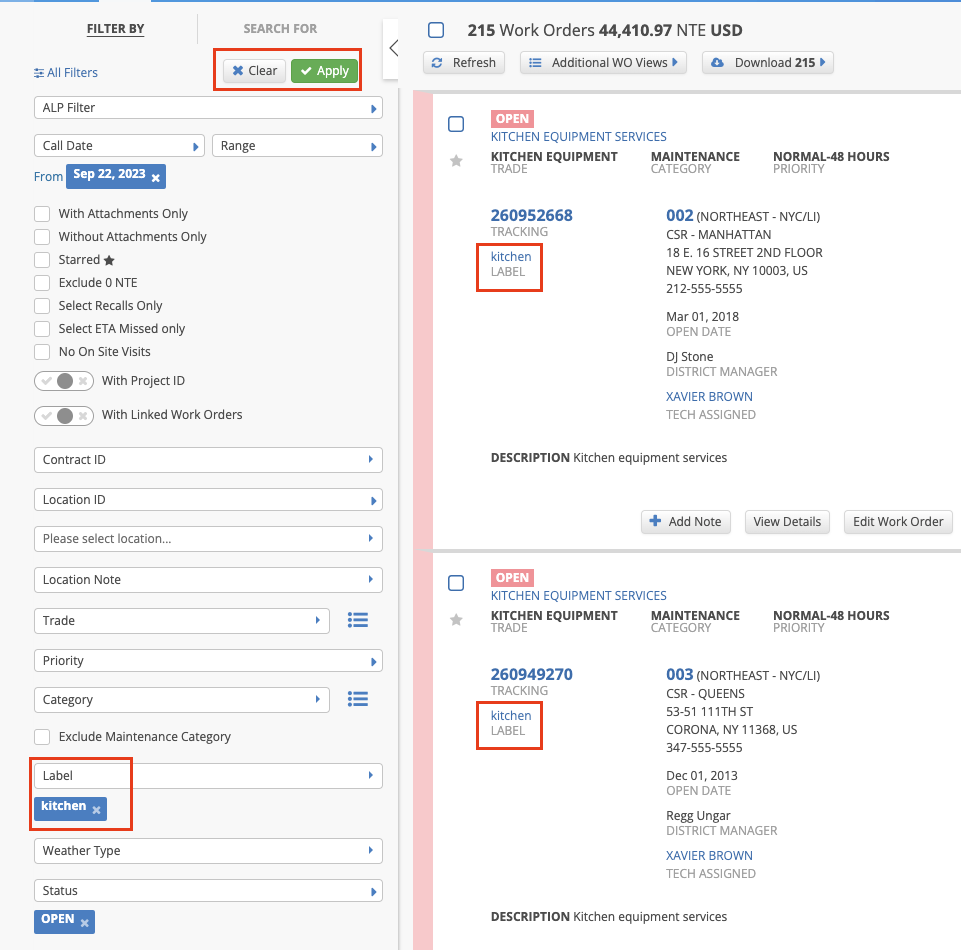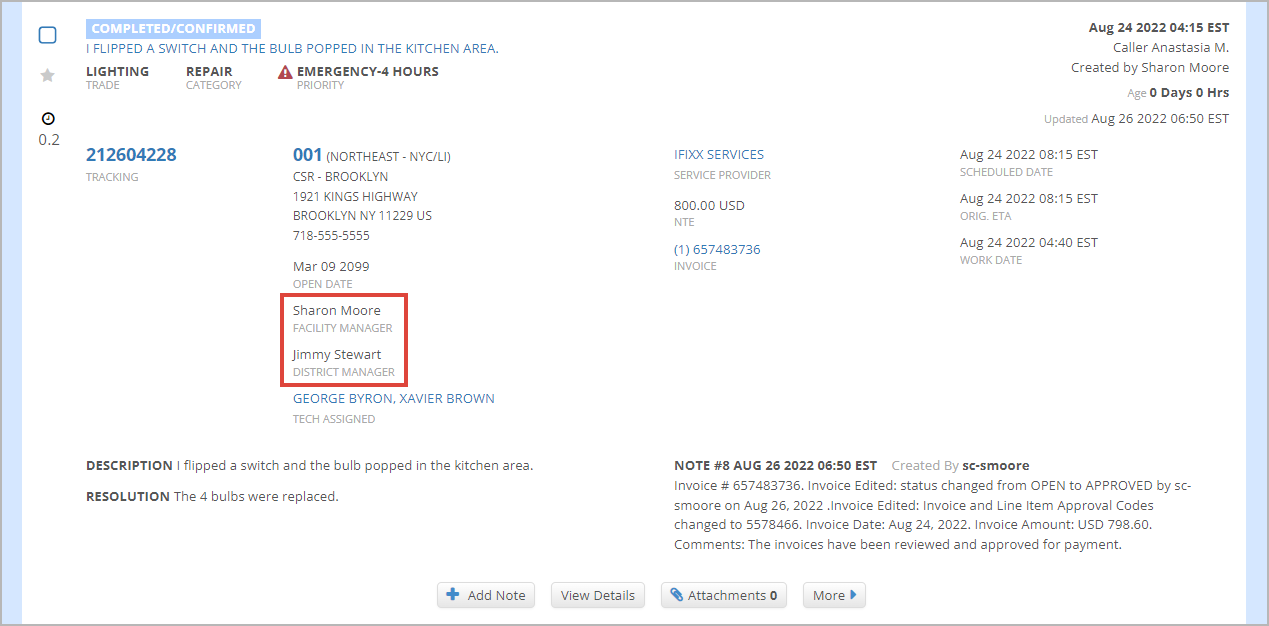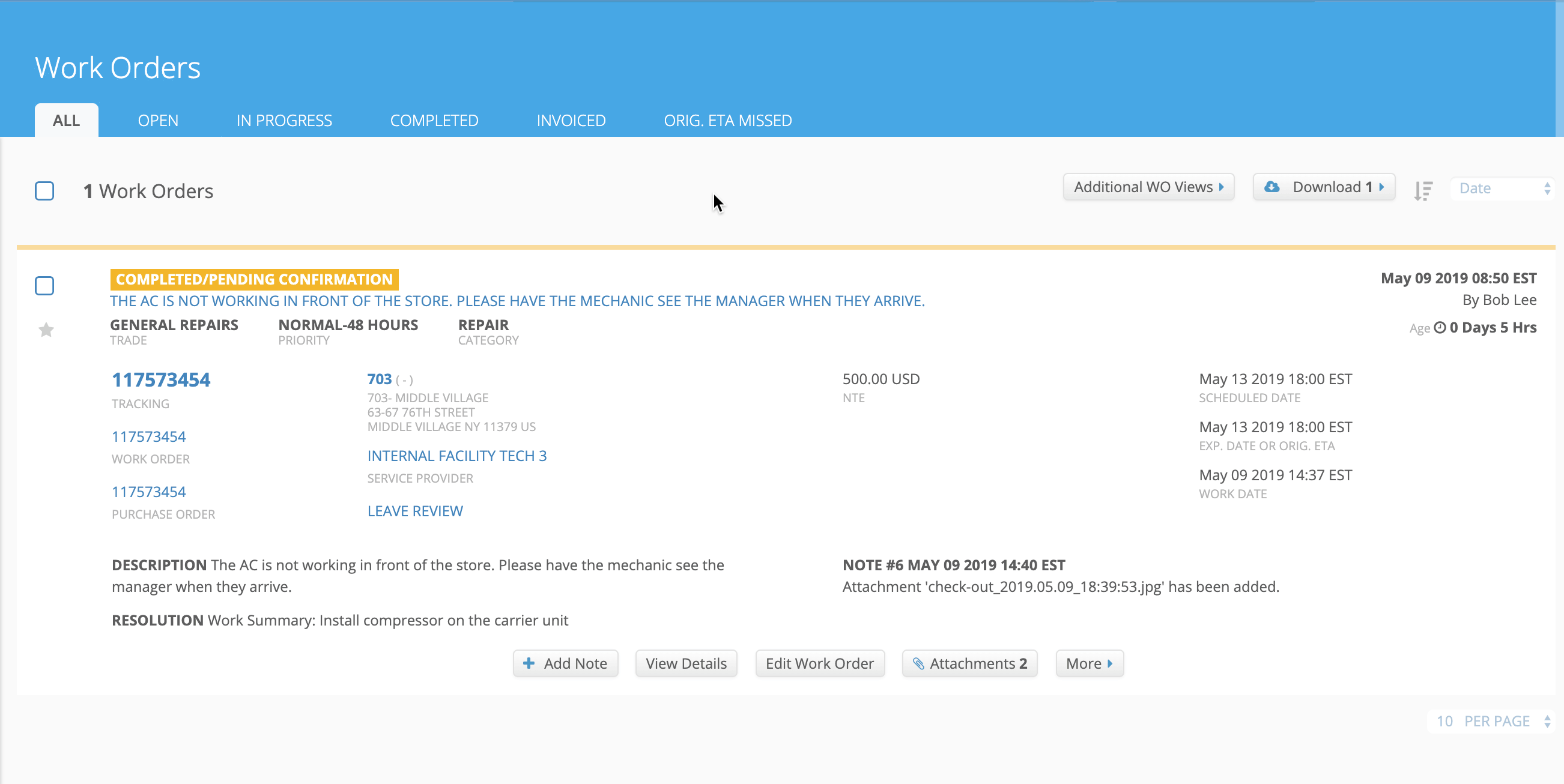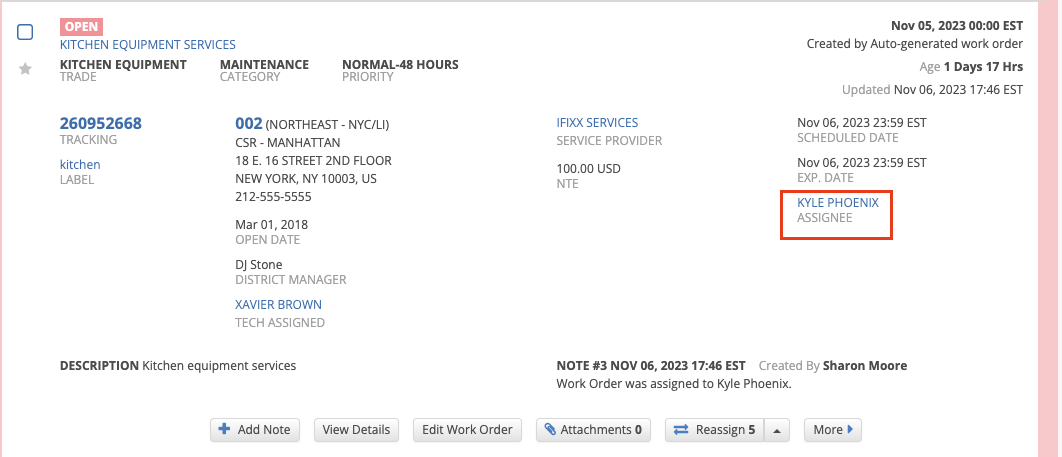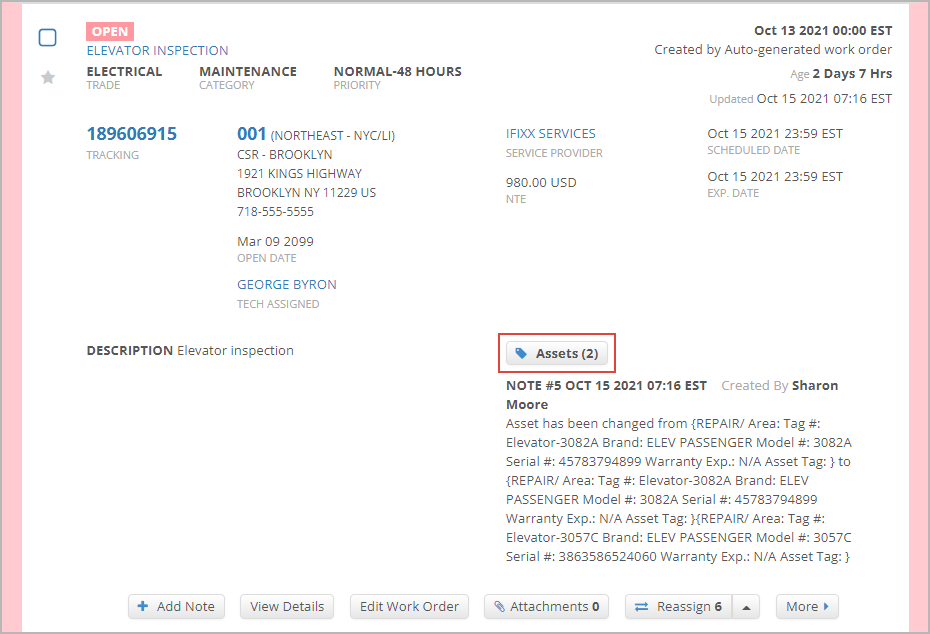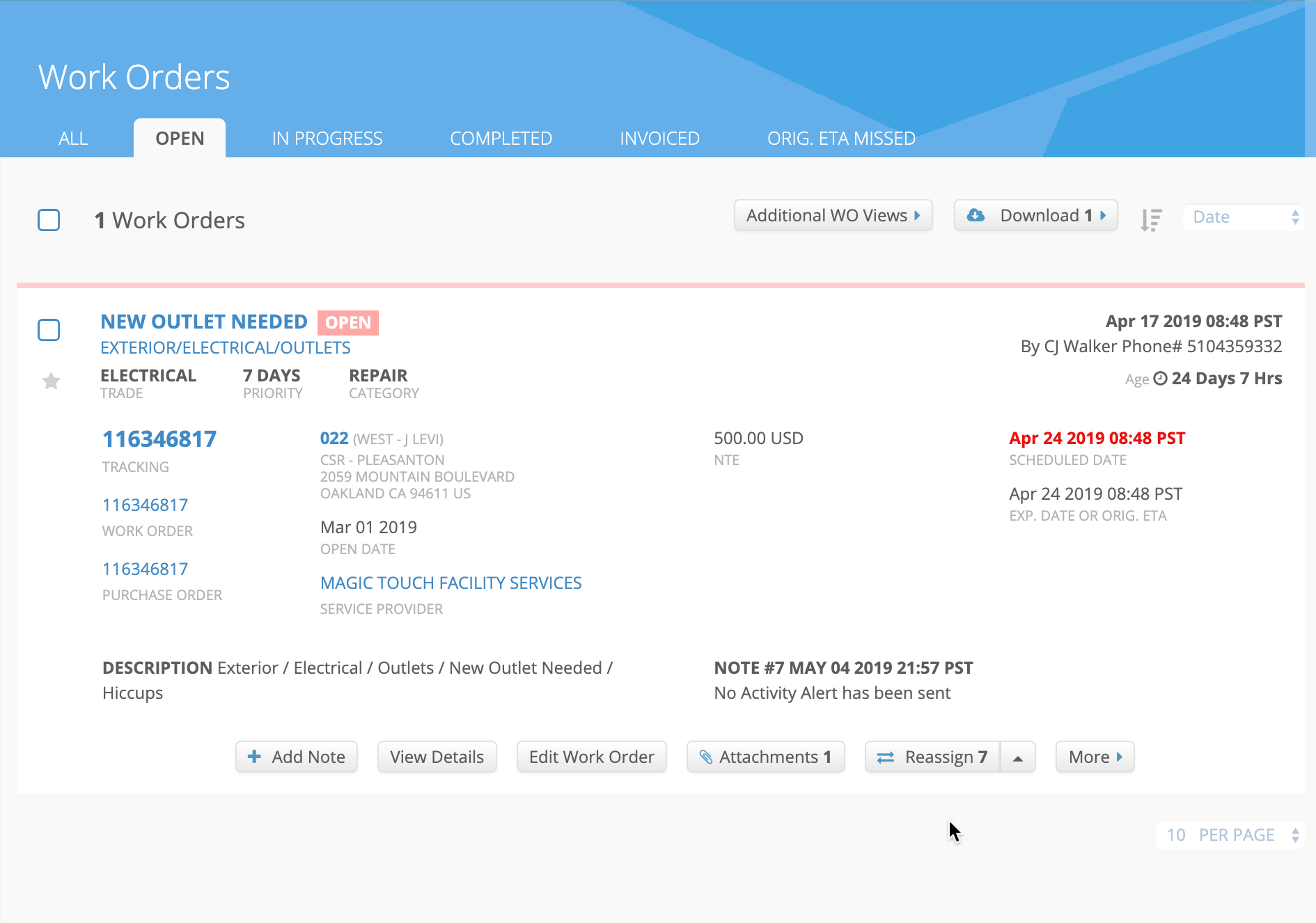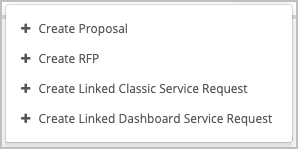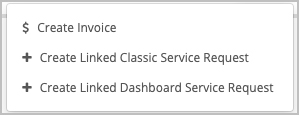In the Work Orders module, you can see a list view of all work orders entered through either the Dashboard or the Planned Maintenance module.
Viewing Work Order Details
Understanding the details of a work order helps you manage the facilities issues happening at your locations more effectively.
On each work order you will see the following information, divided into 5 sections:
- Section 1 displays the problem code, status, issue, trade, priority, category, created by, and caller details.
- Section 2 displays the tracking number, location details, the assigned service provider and technician, NTE, and related issue dates such as scheduled date, rescheduled ETA date, and work date.
- Section 3 displays the problem description, resolution (including resolution and root cause codes if applicable), and the last added note. If a work order has an associated RFP or asset, they also appear here.
- Section 4 displays the options to view/edit the work order and create a proposal, an invoice, and a linked work order.
- Section 5 displays icons indicating recalls, linked work orders, starred work orders, the total time spent by a technician on-site as well as a checkbox to select the work order for bulk actions.
Section 1: Issue and Status
This section displays information in three rows. On the left are:
Problem Code and Status highlighted with the color matching the status of the work order. (SeeAbout Work Order Life Cycle and Statusesfor more information.) In case the work order has an extended status, it appears here, providing you information on the exact progress of the work order. Clicking the status/problem code area opens the detailed view of the work order.
- Area, Problem Type, and Asset; or simply the Problem Description when other information is not available.
- Trade, Priority, and Category of the work order.
- The date/time the work order was created.
On the right, the following information is available:
- Caller, which is either
- the name of the person who called in the work order; or
- "Automatically Generated" when generated from the Planned Maintenance module
- Created by, the User Name/User ID of the person who entered the work order into ServiceChannel
- Age of the work order, which is how long the work order has been open. Once the work order is in the Complete status, the aging stops.
Section 2: Work Details
Information is arranged in 4 columns here:
Column 1: Work Order identification details, including the tracking number, work order number, purchase order number, work order label, and weather event (where applicable).
- Clicking on work order numbers open a detailed view of the work order. It's important to note that:
- Tracking numbers are automatically applied to all work orders and cannot be edited. Work Order numbers and Purchase Order (PO) numbers are automatically assigned the same number as the Tracking Number, and will not appear on the work order unless edited.
- PO numbers can have a maximum of 50 alphanumeric characters. On the Work Order List, PO numbers are truncated to less than 20 characters. To see the full number, either mouse over the number or edit the work order.
- Tracking numbers, Work Order numbers, and PO numbers carry over throughout Service Automation, namely to Invoices, Proposals, and downloaded reports.
- Clicking on a Label or Weather event updates the filters on the left. Click Apply to see all work orders with that label or weather event. Click Clear to remove all filters.



